Note: A writer of both fiction and non-fiction, James Carroll is a WINNER of many prizes in both genres.
“The Pope?…Haven’t you noticed? After the Nazis massacred those saps at Ardeatine, the Pope condemned not the Nazis but the Partisans, for bringing it on themselves! Yesterday, with two hundred thousand people on their knees in St. Peter’s Square, including lots of teary GIs, he blessed the Krauts for sparing Rome, without a word of thanks to us. Up there on his balcony, above it all.”—American Col. Peter Mates, in OSS deep cover.
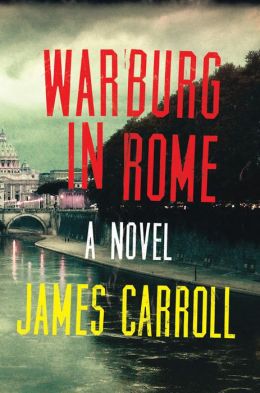 The constant machinations of the Vatican and its hierarchy as they played all sides during the post-war years of World War II emphasize the fact that the Nazi Holocaust – ruthless, coldblooded, and almost impossible to believe in its inhumanity – was only one of the horrors faced by Jews in the 1940s. The Holy See, dedicated to the Gospel of love and charity, and committed to working with the poor, the sick, and the downtrodden, became so involved in international politics and so protective of its own power and relationships within Germany and Italy that it contributed to another whole level of international abuse of the Jews. Pope Pius XII, who had been papal nuncio to Germany from 1917 – 1929, spoke fluent German and had long-standing relationships with all the members of the church hierarchy in Germany, and many of them accompanied him to Rome when he became Pope and stayed with him for the rest of his life. Their attitudes had been formed during their years in Germany, and many people there believed that the Jews’ goal was to destroy Christianity. The institutional anti-Semitism which worked its way into the church is one of the primary subjects of this dramatic and eye-opening novel by former priest James Carroll.
The constant machinations of the Vatican and its hierarchy as they played all sides during the post-war years of World War II emphasize the fact that the Nazi Holocaust – ruthless, coldblooded, and almost impossible to believe in its inhumanity – was only one of the horrors faced by Jews in the 1940s. The Holy See, dedicated to the Gospel of love and charity, and committed to working with the poor, the sick, and the downtrodden, became so involved in international politics and so protective of its own power and relationships within Germany and Italy that it contributed to another whole level of international abuse of the Jews. Pope Pius XII, who had been papal nuncio to Germany from 1917 – 1929, spoke fluent German and had long-standing relationships with all the members of the church hierarchy in Germany, and many of them accompanied him to Rome when he became Pope and stayed with him for the rest of his life. Their attitudes had been formed during their years in Germany, and many people there believed that the Jews’ goal was to destroy Christianity. The institutional anti-Semitism which worked its way into the church is one of the primary subjects of this dramatic and eye-opening novel by former priest James Carroll.
The Holy See was not alone in its anti-Semitism even after the Nazi atrocities were revealed with incontrovertible documentation. Most countries, including the United States, would not accept the boatloads of refugees who wanted to escape for their lives, the US ultimately welcoming only a few thousand of the millions of imperiled Jews to an unused base in Fort Ontario, New York. Instead, the leaders of well-meaning nations established organizations within Europe, like the War Refugee Board sponsored by the US, to deal with the problems within Europe, leaving their directors to negotiate with all the postwar governments and partisan groups operating in Europe in order to feed and try to house the thousands of refugees. Partisans from many countries, operating freely, were often looking for revenge for atrocities in other parts of Europe, and no one knew who they were or where they would strike next. As arguments arose over jurisdictions and who was doing what among the Allied groups trying to help, Nazis, including war criminals, were obtaining passports secretly from sympathetic passport officials in countries across Europe, including the Vatican. As these criminals were escaping from Europe, usually to South America, thousands of new refugees from Poland, Yugoslavia, Romania, and Hungary were arriving as they escaped from Russian Communists on the move.
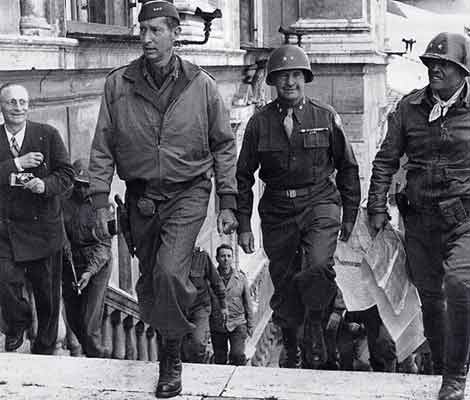
Gen. Mark Clark of the US liberates Rome, in violation of his express orders from the British Allied Command
Author James Carroll, a former priest, uses his knowledge of the church and the bureaucracy at the Holy See to illustrate all these postwar complications, creating vivid characters who, themselves, are not perfect. Twenty-eight-year-old law school graduate David Warburg, working for the US Treasury Department, opens the novel when he meets with his mentor, Harold Gardner; with Henry Morgenthau, Jr., President Franklin D. Roosevelt’s Secretary of the Treasury; and with a third man, whom he later discovers is Rabbi Stephen Wise, head of the American Jewish Congress. Warburg then learns that he will head up the War Relief Board in Europe. On the plane to Rome, he meets Monsignor Kevin Deane, sometimes referred to as “Spellman’s jockey” because of his work as assistant to New York’s Archbishop Francis Spellman, the person who raised more money for the Vatican relief agency than anyone else in the world. Deane is going to Rome to head up the Catholic Relief Services. Also working for the US is fifty-year-old Colonel Peter Mates, who had been supplying Yugoslav partisans earlier in the war and who is now with Civil Affairs, working in deep cover for the OSS.
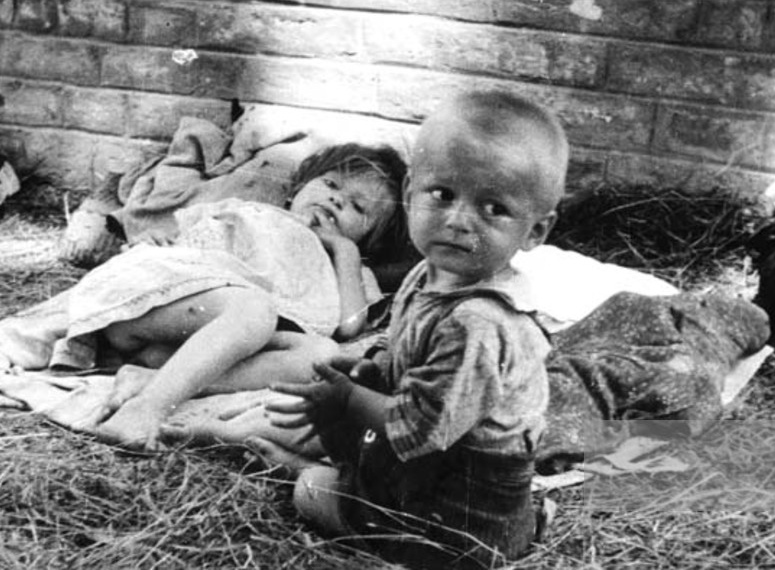
Think of these children when you read of the atrocities committed by a Franciscan priest at Sisak in Croatia.
While these Americans are preparing for their new jobs, Marguerite d’Erasmo, working with the Croce Rosa (Red Cross), appears at the hangar when they land, seeking food for the over one thousand untended orphans in her relief camp at Quirinal Gardens. Marguerite has recently returned to Rome after working with a guerrilla band on the border of Italy and Yugoslavia, a place where she saw the partisans with whom she’d been working commit a cold-blooded massacre. Shaken to the core, she takes dangerous actions, but this atrocity she has witnessed and its aftermath permanently affect her life, long after her escape back to Rome to a convent controlled by the Vatican. Marguerite and her partisan lover also have investigated the atrocities at Sisak, a camp for young children, some as young as three, run by the Croatian “ustashe” under the leadership of a Franciscan priest named Vukas, who insists that the children are all well cared for and that it is the Serb Communists who are the “beasts.” Vukas becomes the prototypical sadist, a man so lacking in any kind of human feeling that it defies belief that he could have been a priest. Two other characters also appear with Marguerite throughout these plot threads – Padre Antonio, Marguerite’s long-time and much beloved old priest, and Giacomo Lionni, a Jew who has hidden other Jews in the catacombs and collected names of still others in need of protection.
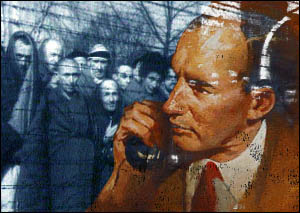
This photo accompanies a story about Raoul Wallenberg from Sweden and his efforts to save the Jews. He was eventually captured by the Russians and vanished from sight. Click here for link to story.
The complexities of this post-war era add to the novel’s power, since any confusion the reader has also reflects the difficulties of everyone else in this post-war mess as they try to do what is right –for humanity, themselves, or their particular partisan goals; for innocent refugees caught in terrible events; for the good of their country; or for their religion. Unfortunately, the goal for many is also affected by their anti-Semitic beliefs about the dangers the Jews represent as a group. With real people adding a sense of realism to the action and actual events controlling many aspects of the plot, James Carroll creates a novel which documents little known aspects of post-war Europe, creating an indictment not only of the papacy and the actions of the pro-German clergy, but also of the United States, Europe, and South America for failing to act strongly enough and fast enough. Were it not for Swedish ambassador Raoul Wallenberg and his untiring efforts to provide passports and passage for refugees to get to Sweden, one can only wonder how many other needless deaths would have occurred long after the Nazis were defeated.
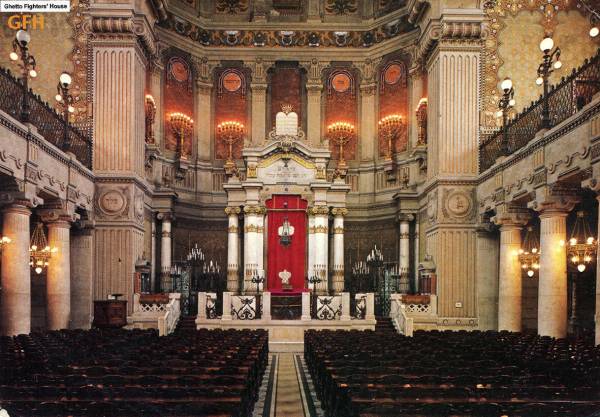
The Great Synagogue of Rome. To enlarge, double- click here, then double-click again on the small photo which appears on your screen. The full screen photo is breath-taking
Photos, in order: The author’s photo and an interview with him appear here: http://michaeloloughlin.
Gen. Mark Clark enters Rome to liberate it on June 4, 1944, in disobedience to the British Allied Command which was sending him north. http://www.paradoxplace.
These young children from the Sisak camp lived under the aegis of a sadistic Franciscan priest. Think of them when you read of the atrocities committed by a this priest in Croatia. http://www.memorialmuseums.org/
Raoul Wallenberg, representing Sweden, saved thousands of refugees by giving them Swedish passports to a new life. He disappeared when he was captured by the Russians, never heard of again. Click here for story. http://news.bbc.co.uk
The Great Synagogue of Rome. Click this photo first, and when the new page opens, double click on the photo there for a full-size photo of the interior. http://www.infocenters.co.il/

